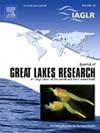威斯康星州苏必利尔湖沿岸海岸快速变化的激光雷达测量结果(2009-2019 年)
IF 2.5
3区 环境科学与生态学
Q3 ENVIRONMENTAL SCIENCES
引用次数: 0
摘要
海岸景观是高度动态的,综合测量形态变化对改善海岸管理具有重要意义。过去对威斯康辛州苏必利尔湖沿岸形态变化的评估,由于依赖于基于二维样条或平面形式的测量,无论是在空间覆盖范围上,还是在结合三维变化的能力上,都受到限制。在这里,我们使用2009年和2019年收集的机载激光雷达数据,量化了威斯康星州苏利尔湖74公里海岸线的侵蚀和沉积,跨越了从低于平均水平到接近记录的水位高度的过渡。我们使用开源方法生成新的1米分辨率DEM和半自动划定的钝趾和峰顶。研究区经历了3.03±0.59 × 106 m3的净侵蚀,对应于每m海岸线3.9 m3 yr - 1的归一化平均侵蚀速率。在这段时间内,平均崖尖后退了6.8±5.6米(0.7±0.4米/年−1),而平均崖顶后退了2.9±5.7米(0.3±0.4米/年−1),导致大面积的崖变陡。海岸侵蚀速率表现出强烈的岩性依赖性,砂质较多的断崖每米海岸线损失7.0±4.9立方米/年,而富含粘土的断崖每米海岸线损失3.2±2.3立方米/年。累积范围仅限于威斯康辛角。我们的研究结果表明,威斯康辛州苏必利尔湖海岸的侵蚀速度与其他软海岸悬崖系统相似,而且侵蚀速度存在很大的空间变化率。截至2019年,断崖坡度有所增加,断崖峰后退预计将继续保持稳定的坡度角。本文章由计算机程序翻译,如有差异,请以英文原文为准。
LiDAR-derived measurements of rapid coastal change along Wisconsin’s Lake Superior coast (2009–2019)
Coastal landscapes are highly dynamic, and comprehensive measurements of morphological change are important for improved coastal management. Past assessments of morphological change along Wisconsin’s Lake Superior coast were limited in either their spatial coverage or their ability to incorporate three-dimensional changes due to their reliance on 2D transect-based or plan-form measurements. Here, we quantified erosion and deposition for 74 km of Wisconsin’s Lake Superior coastline using airborne LiDAR data collected in 2009 and 2019, spanning a transition from below-average to near-record water elevations. We used open-source methods to generate new 1-m resolution DEM’s and semi-automatically delineated bluff toes and crests. The study reach experienced 3.03 ± 0.59 106 m3 of net erosion, corresponding to a normalized mean erosion rate of 3.9 m3 yr−1 per m of coastline. The mean bluff toe retreated 6.8 ± 5.6 m over this time period (0.7 ± 0.4 m yr−1), while the mean bluff crest retreated 2.9 ± 5.7 m over this time period (0.3 ± 0.4 m yr−1), leading to widespread bluff steepening. Coastal erosion rates exhibited a strong lithological dependence, with sandier bluffs losing 7.0 ± 4.9 m3 yr−1 per m of coastline while more clay-rich bluffs eroded at a rate of 3.2 ± 2.3 m3 yr−1 per m of coastline. Aggradational reaches were limited to Wisconsin Point. Our findings indicate that Wisconsin’s Lake Superior coast is eroding at rates similar to other soft coastal cliff systems and there is substantial spatial variability in erosion rates. As of 2019, bluff slopes had increased and bluff crest retreat is expected to continue to achieve stable slope angles.
求助全文
通过发布文献求助,成功后即可免费获取论文全文。
去求助
来源期刊

Journal of Great Lakes Research
生物-海洋与淡水生物学
CiteScore
5.10
自引率
13.60%
发文量
178
审稿时长
6 months
期刊介绍:
Published six times per year, the Journal of Great Lakes Research is multidisciplinary in its coverage, publishing manuscripts on a wide range of theoretical and applied topics in the natural science fields of biology, chemistry, physics, geology, as well as social sciences of the large lakes of the world and their watersheds. Large lakes generally are considered as those lakes which have a mean surface area of >500 km2 (see Herdendorf, C.E. 1982. Large lakes of the world. J. Great Lakes Res. 8:379-412, for examples), although smaller lakes may be considered, especially if they are very deep. We also welcome contributions on saline lakes and research on estuarine waters where the results have application to large lakes.
 求助内容:
求助内容: 应助结果提醒方式:
应助结果提醒方式:


